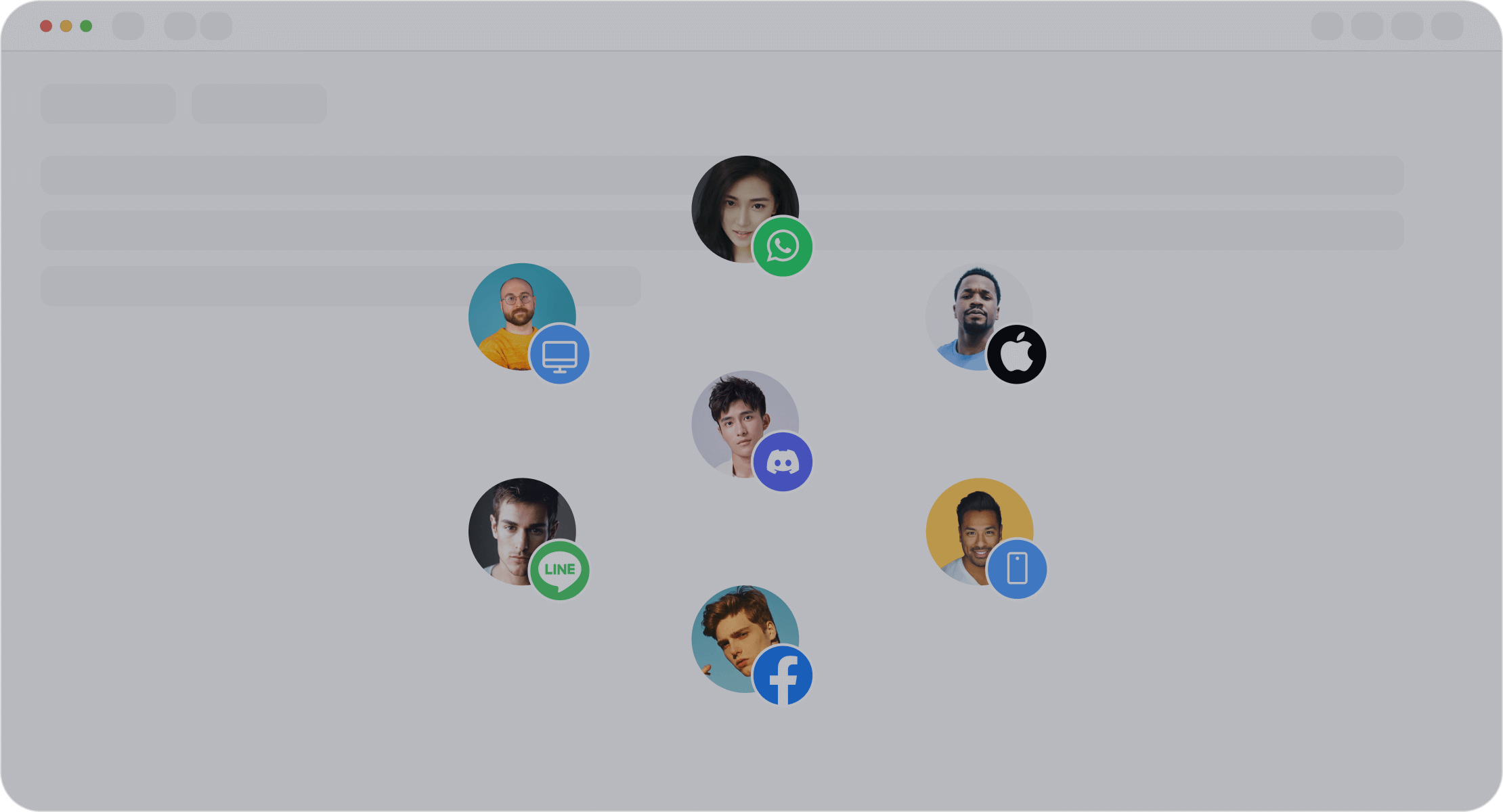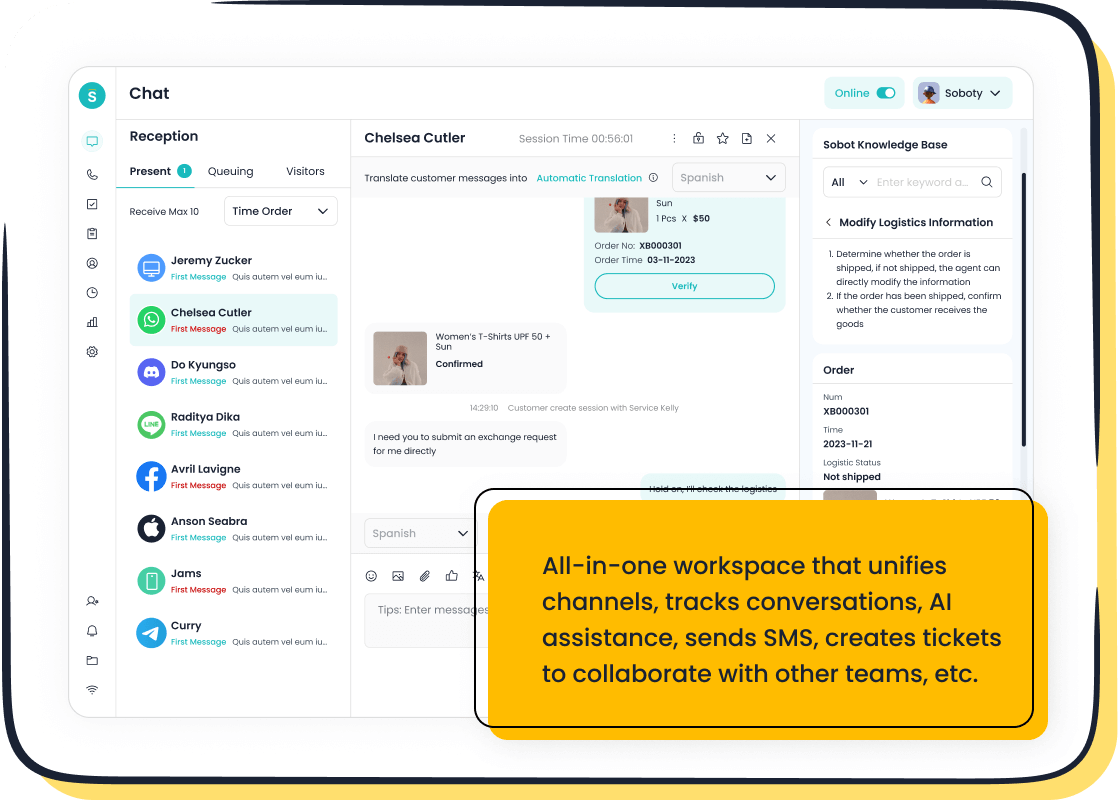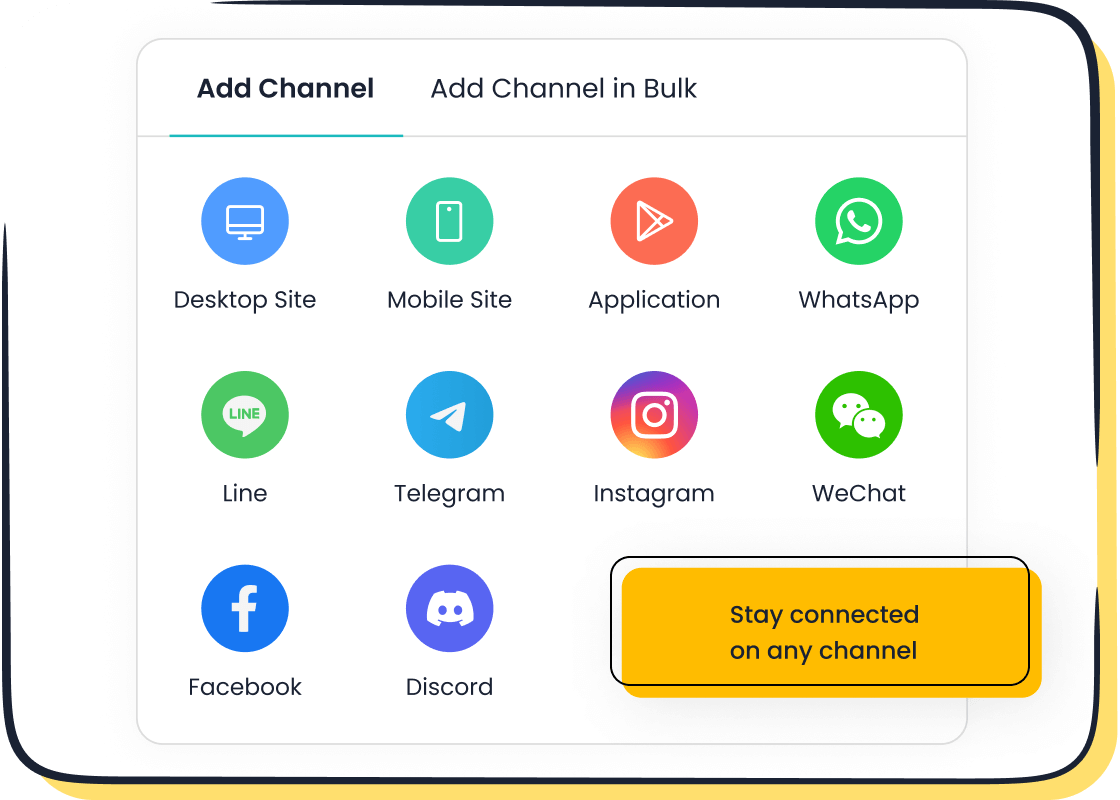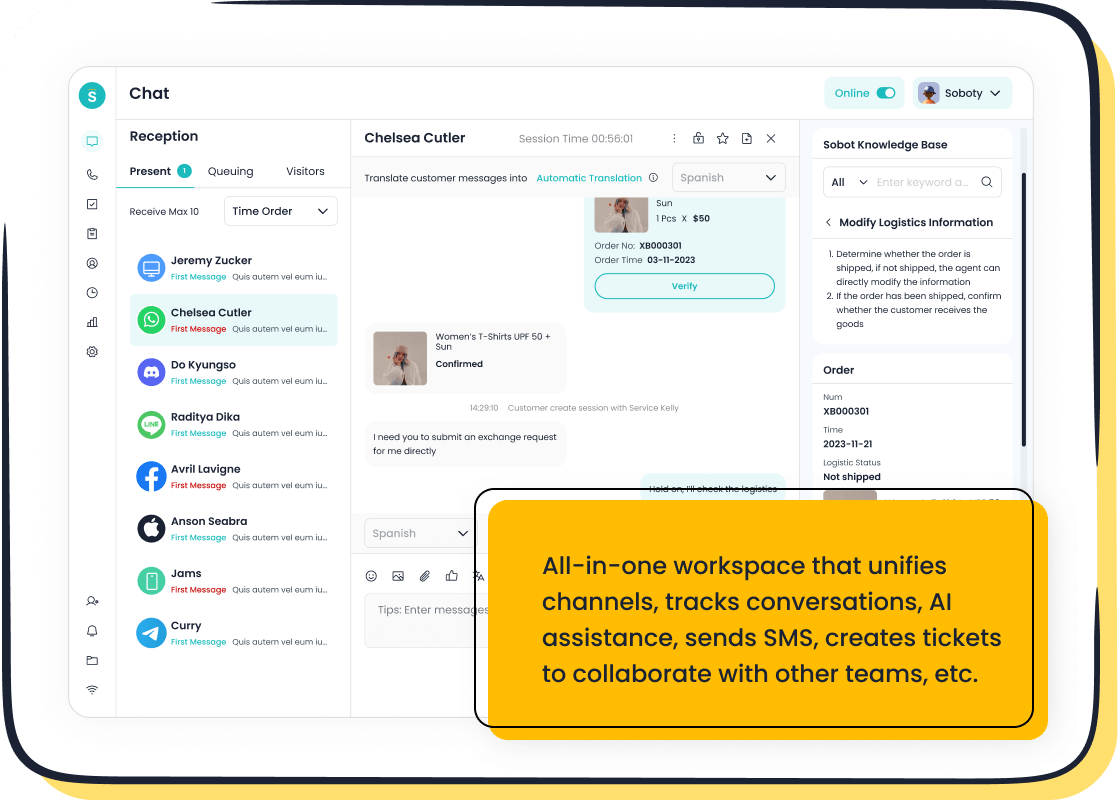Omnichannel vs Multichannel Customer Service Explained Simply

The main difference between omnichannel vs multichannel customer service is that omnichannel connects all your communication channels for a seamless experience, while multichannel simply offers several separate ways for customers to reach you. Omnichannel customer service means you unify channels like chat, email, and phone so agents see every interaction in one place. Multichannel customer service gives customers options but keeps each channel independent. This matters because omnichannel lets your team resolve issues faster and keeps customers happy by reducing repetition and frustration. Sobot, with its advanced Sobot AI and Sobot call center, helps you deliver integrated support that boosts satisfaction and loyalty.
Omnichannel vs Multichannel Customer Service
Key Difference
When you look at omnichannel vs multichannel customer service, the main difference comes down to how channels connect. In a multichannel setup, you offer support through several channels like phone, email, and chat. Each channel works on its own. If a customer starts a conversation on social media and then calls your support line, the agent may not know what happened before. This can slow down the process and make customers repeat themselves.
With omnichannel customer service, you connect all your channels. Every interaction, no matter where it starts, gets tracked in one place. Agents see the full history, so they can help customers faster and more accurately. For example, if a customer sends a message on WhatsApp and later follows up by email, the agent can see both conversations. This approach creates a smooth journey for customers and helps your team work more efficiently.
Why It Matters
Customers today expect quick, accurate, and easy support. When you use an omnichannel strategy, you meet these expectations by giving customers a seamless experience. They do not have to repeat their story every time they switch channels. This saves time and reduces frustration. Studies show that businesses using omnichannel customer service see higher satisfaction and loyalty rates. For example, Sobot’s omnichannel solution lets agents view all customer interactions in a unified workspace, which leads to faster resolutions and happier customers.
In contrast, multichannel customer service can leave customers feeling disconnected. They may need to explain their issue more than once, which can lead to longer wait times and lower satisfaction. While multichannel may work for smaller businesses with fewer interactions, most customers now expect a connected experience. An omnichannel strategy not only improves customer experience but also boosts customer engagement and retention. Companies that use omnichannel vs multichannel customer service often see better results in both efficiency and customer loyalty.
Multichannel Customer Service

What It Is
Multichannel customer service gives your customers several ways to reach your business. You might offer support through phone, email, live chat, and social media. Each channel works on its own, so your team handles messages separately. When you use a multichannel contact center, you give customers choices. They can pick the channel they like best. This approach helps you reach more people, since not everyone wants to call or email.
A multichannel contact center does not connect these channels together. If a customer sends a message on Facebook and later calls your support line, your team may not see both conversations. This can make it harder to give fast, personal help. Many businesses start with a multichannel strategy because it is simple to set up. You can add new channels as your business grows.
Tip: Multichannel customer service is a good first step if you want to offer more ways for customers to contact you, but it may not give a smooth experience across channels.
How It Works
In a multichannel contact center, your team manages each channel separately. You might have one group answering phone calls, another replying to emails, and a third handling social media. This setup can help you organize your team, but it can also create silos. Customers often need to repeat their information if they switch channels.
Here’s what happens in a typical multichannel setup:
- Customers choose their favorite way to reach you, like chat, phone, or email.
- Your agents respond on that channel, but they may not know about past conversations on other channels.
- If a customer moves from one channel to another, they may have to explain their issue again.
Studies show that multichannel customer service can lead to slower response times. Since channels are not connected, agents spend more time gathering information. This can make customers wait longer for answers. In contrast, omnichannel systems like Sobot’s unify all channels, so agents see the full history and respond faster.
A multichannel contact center works well for businesses that want to offer more options without changing their whole system. As your business grows, you may find that connecting your channels with an omnichannel solution helps you serve customers better.
Omnichannel Customer Service

What It Is
Omnichannel customer service means you connect every way your customers reach out to you. You bring together channels like phone, email, live chat, and social media into one system. This approach lets you see all customer conversations in one place. When you use an omnichannel strategy, you make sure your team never misses important details. You also help customers get answers faster.
Omnichannel is different from multichannel. In a multichannel setup, each channel stands alone. Omnichannel links them together. This connection gives you a full view of each customer’s journey. You can track every question, complaint, or request. Many businesses now use omnichannel customer service because it improves satisfaction and loyalty. According to a report from Aberdeen Group, companies with strong omnichannel strategies keep 89% of their customers, compared to 33% for those with weak strategies (source).
How It Works
With omnichannel, you use one platform to manage all customer support. Your agents see every message, call, or chat in a single workspace. If a customer starts a chat on your website and later sends an email, your team sees both. This setup helps you give personalized service and solve problems quickly.
Sobot’s omnichannel solution makes this easy. You can connect channels like WhatsApp, Facebook, Instagram, and more. Sobot’s unified workspace shows all customer data and past conversations. Agents use AI tools to answer questions faster and track customer needs. You also get analytics to see how well your team performs.
Here’s how omnichannel customer service helps you:
- You reduce repeated questions from customers.
- You give faster, more accurate answers.
- You build trust and loyalty with every interaction.
When you use an omnichannel strategy, you make customer support simple and effective. Your customers feel heard and valued every time they reach out.
Omnichannel vs Multichannel Customer Service: Comparison
Integration
When you look at customer service, integration means how well your channels work together. In a multichannel contact center, you offer support through phone, email, chat, and social media. Each channel stands alone. Your agents handle each one separately. If a customer sends a message on Facebook and then calls your support line, your team may not see both conversations. This setup can lead to confusion and slow responses.
Omnichannel contact center solutions change this. You connect all your channels into one system. This is called cross-channel integration. Your agents see every customer interaction in a single workspace. If a customer starts a chat on your website and later sends an email, your team sees the full story. This level of channel integration helps you solve problems faster and keeps your team organized.
Sobot’s omnichannel contact center brings all your channels together. You can manage WhatsApp, Facebook, Instagram, and more in one place. Agents use AI tools to track conversations and respond quickly. This unified approach makes your customer service more efficient and customer-centric.
Note: Cross-channel integration is key for a smooth digital customer experience. When you connect your channels, you make it easier for customers to get help and for agents to deliver great service.
Here is a table to help you compare integration in both approaches:
| Feature | Multichannel Contact Center | Omnichannel Contact Center |
|---|---|---|
| Channel Integration | Channels work separately | All channels connected |
| Agent View | Each channel has its own inbox | Unified workspace for all channels |
| Customer History | Hard to track across channels | Full history in one place |
| Workflow Automation | Limited | Advanced and AI-powered |
| Cross-Channel Integration | No | Yes |
Customer Experience
Customer experience is how your customers feel when they interact with your business. In a multichannel contact center, you give customers choices. They can call, email, or chat. But if they switch channels, they may have to repeat their story. This can lead to frustration and longer wait times.
Omnichannel customer service gives you a better way. You connect every channel, so your agents see the full customer journey. If a customer starts on WhatsApp and moves to email, your team knows what happened before. This makes your service faster and more personal. Customers feel valued because they do not have to repeat themselves.
A study from Aberdeen Group found that companies with strong omnichannel strategies keep 89% of their customers, while those with weak strategies keep only 33% (source). This shows how important a connected customer experience is for loyalty and retention.

Sobot’s omnichannel contact center helps you deliver this level of service. You can use tools like Sobot Live Chat to keep all conversations in one place. AI-powered features help agents respond quickly and accurately. This leads to higher customer satisfaction and better customer engagement.
Tip: A great customer experience builds trust and loyalty. When you use omnichannel customer service, you make every interaction count.
Data and Insights
Data and insights help you understand your customers and improve your service. In a multichannel contact center, data often stays in separate systems. You might have call logs in one place and chat records in another. This makes it hard to see the big picture or spot trends.
Omnichannel contact center solutions solve this problem. You collect all your data in one system. You can track every customer interaction, see patterns, and measure performance. This helps you make smart decisions and improve your digital customer experience.
Sobot’s omnichannel solution gives you built-in analytics. You can view over 150 indicators, create custom reports, and track customer satisfaction. This helps you find what works and fix what does not. You can also use AI to spot trends and predict customer needs.
Fact: With unified data, you can improve agent training, spot common issues, and boost customer satisfaction.
Real-World Example: Opay’s Success with Sobot
Let’s look at how a real company used omnichannel customer service to improve results. Opay is a leading financial service platform. Opay faced challenges managing customer interactions across many channels. Customers reached out through social media, email, and voice calls. The team struggled to keep up and deliver a smooth customer experience.
Opay chose Sobot’s omnichannel contact center to solve this. Sobot unified all channels into one system. Agents could see every customer conversation, no matter where it started. Sobot’s intelligent IVR and email ticketing made it easy to manage high volumes. Opay also used WhatsApp for targeted marketing, reaching more customers with important updates.
The results were impressive:
- Customer satisfaction jumped from 60% to 90%.
- Operational costs dropped by 20%.
- Conversion rates increased by 17%.
- 60% of customers solved issues on their own with self-service options.
Opay’s story shows how omnichannel customer service and cross-channel integration can transform your business. When you use a unified system like Sobot, you make your service faster, smarter, and more customer-centric.
Learn more about Opay’s journey with Sobot here.
Omnichannel Contact Center Solutions
Benefits
An omnichannel contact center gives you a powerful way to improve your customer experience. You connect every channel—like phone, email, live chat, and social media—into one system. This unified customer care experience helps your team see all customer interactions in a single workspace. You can respond faster and give more personalized service. Customers do not have to repeat their story, which makes them feel valued.
Sobot’s omnichannel contact center and Live Chat stand out as leading solutions. You can manage WhatsApp, Facebook, Instagram, and more, all in one place. Sobot uses AI tools to help agents answer questions quickly and track customer needs. You also get built-in analytics to measure performance and spot trends. This approach boosts efficiency and makes your customer service strategy more customer-centric.
When you use an omnichannel strategy, you increase customer engagement and loyalty. Studies show that companies with strong omnichannel customer service keep more customers and see higher satisfaction rates (source). You also reduce costs and improve agent productivity.
Choosing the Right Approach
You should choose your approach based on your business size, resources, and readiness. Omnichannel contact center solutions work best for businesses that have enough resources and want to deliver a seamless customer experience. If your business is smaller or just starting, you might begin with a multichannel setup. As you grow, you can move to an omnichannel strategy.
Transitioning from multichannel to omnichannel can bring challenges. You may need new skills, better teamwork, and strong leadership. The table below shows some common challenges and ways to overcome them:
| Challenge Category | Key Challenges and Issues | Suggested Strategies |
|---|---|---|
| Human Talent | Need for new practices and leadership commitment. | Prioritize leadership, engage channel owners, define common goals. |
| Organizational Culture | Tensions between teams, need for new skills and design thinking. | Add new skills, embrace design thinking, encourage collaboration. |
| Organizational Behavior | Siloed working structures, lack of customer focus. | Shift to integrated teamwork, focus on customer interaction. |
You can succeed with an omnichannel contact center by focusing on teamwork and a customer-centric mindset. Sobot helps you unify channels, boost efficiency, and improve customer satisfaction. When you are ready, an omnichannel strategy will help you deliver the best customer support and stand out in your industry.
You now know the key difference between multichannel and omnichannel customer service. A connected system helps you deliver a better customer experience by reducing repeated questions and speeding up support. Studies show that 89% of companies with strong integration keep more customers (source). Take time to review your current setup. If you want to improve customer experience, try Sobot’s Live Chat with a free trial or request a demo at sobot.io.
FAQ
What is the main benefit of omnichannel vs multichannel customer service?
You get a seamless experience with omnichannel customer service. Your agents see every conversation in one place. This helps you solve problems faster. Studies show that companies using omnichannel contact centers keep 89% of their customers (source).
How does Sobot help with omnichannel vs multichannel customer service?
Sobot gives you a unified workspace. You can manage WhatsApp, Facebook, email, and more in one system. Sobot’s omnichannel contact center uses AI tools to boost agent efficiency and improve customer satisfaction. You can learn more at sobot.io.
Can small businesses use omnichannel contact center solutions?
Yes! Small businesses can start with multichannel customer service and move to omnichannel as they grow. Sobot offers flexible solutions. You can try Sobot Live Chat for free and see how omnichannel contact centers help you serve customers better.
Why do customers prefer omnichannel vs multichannel customer service?
Customers want quick answers and hate repeating themselves. Omnichannel contact centers let agents see the full history. This makes support faster and more personal. Multichannel customer service often leads to repeated questions and slower help.
What channels can I connect with Sobot’s omnichannel contact center?
You can connect many channels, such as WhatsApp, Facebook, Instagram, email, and live chat. Sobot’s omnichannel contact center brings all these into one place. This helps you deliver a smooth customer experience every time.
Tip: Using an omnichannel contact center like Sobot helps you boost customer loyalty and reduce costs.
See Also
Comprehensive Overview Of Omnichannel Call Center Platforms
Step-By-Step Process For Deploying Omnichannel Contact Centers
Best Voice Of Customer Tools Reviewed And Compared
